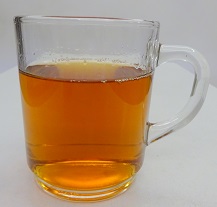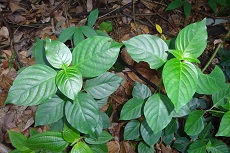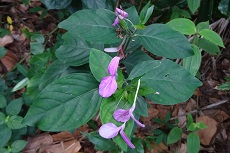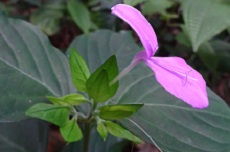| Home | Nature Weekly Index |
5 March 2017 | Magenta Plant (Part 1) | Peristrophe bivalvis |
 Last Sunday morning, I attended Uncle Tan's herbal remedies website launch
ceremony activity at the D'Kranji Farm Resort. The herbal formulations shared in the website were rather unique in 2 ways:
(1) they were the results of decades of experience from one man (Uncle Tan), and (2) the ingredients are usually
inexpensive or freely available in our surrounding. This is so far the only website in Singapore dedicated to
locally-formulated herbal remedies. I came to know about the website project when someone from the volunteered group that
work on this project approached me back in September last year on the use some of my plant photos for this website.
Last Sunday morning, I attended Uncle Tan's herbal remedies website launch
ceremony activity at the D'Kranji Farm Resort. The herbal formulations shared in the website were rather unique in 2 ways:
(1) they were the results of decades of experience from one man (Uncle Tan), and (2) the ingredients are usually
inexpensive or freely available in our surrounding. This is so far the only website in Singapore dedicated to
locally-formulated herbal remedies. I came to know about the website project when someone from the volunteered group that
work on this project approached me back in September last year on the use some of my plant photos for this website.
With that connection, I visited the community garden which Uncle Tan managed in Jurong West area twice last year. The visits resulted in 4 posts: (1) 2 October 2016, (2) 16 October 2016, (3) 30 October 2016 and (4) 20 November 2016. However, he no longer managed this garden but instead was starting a new herbal garden in Kranji area recently.
During the website launch talk, Uncle Tan gave a brief introduction on a few herbs. One that caught my attention was the Magenta Plant or 红丝线 in Chinese (Peristrophe bivalvis). The unique feature of this herb was not the plant parts but on the colour of the decoction after the leafy parts were boiled in water. Strangely, the water will turn magenta (reddish-purple) colour. Boiling something already red in colour such as Roselle (Hibiscus sabdariffa) to get a reddish liquid make perfect sense but turning water to magenta by simply boiling greenish leaves in it was of a different league. It is amount to something magical. With this unique characteristic, it is used to produce a natural purple food colouring. Besides simply boiling the leaves in water to get a magenta herbal drink by adding honey, it could also be used to make soup. Here is a YouTube video if you are interested to know how to boil the leafy parts to get the magenta solution.



.jpg)
The Magenta Plant can be found in the wild here but it is relatively rare. A non-flowering specimen can be easily confused with a very common wild herb known as Chinese Violet (Asystasia gangetica). Besides their flower, the key differentiation feature between them is the winged leaf stalk in Chinese Violet compared to the non-winged version in the Magenta Plant. Another herb that may be mixed up with the Magenta Plant is Amazon Blue (Otacanthus caeruleus). Amazon Blue has blue instead of purple flower and its flower petals are much broader.
Yesterday, I collected some leaves and give it a go. The resulting liquid (showed in the transparent glass) was orange-brown, similar to tea, instead of magenta. No sure what went wrong in the preparation process as I was pretty sure that I got the right plant.